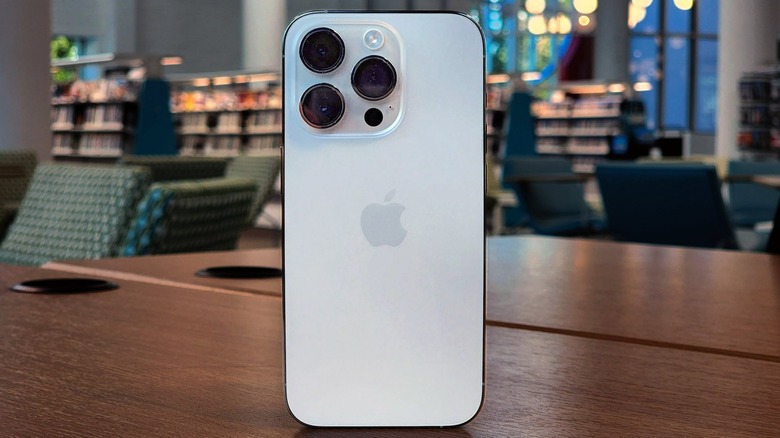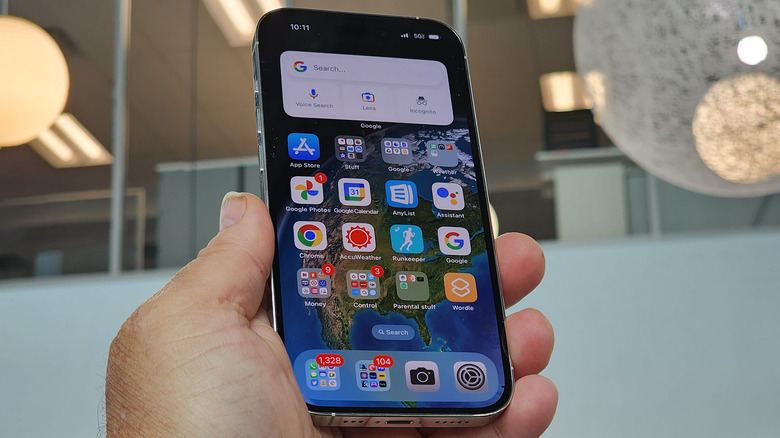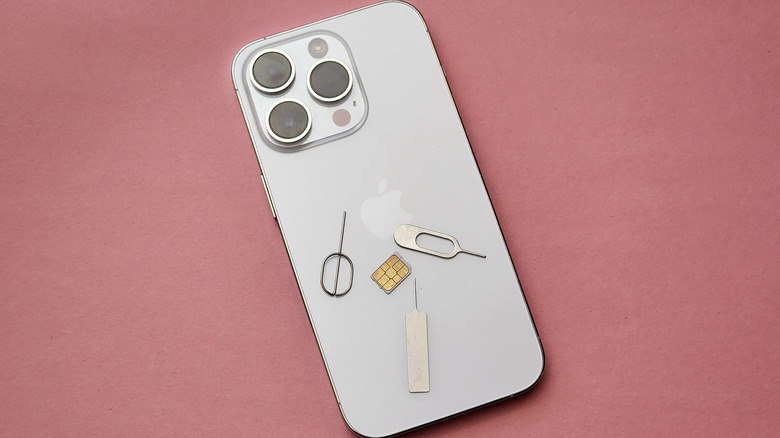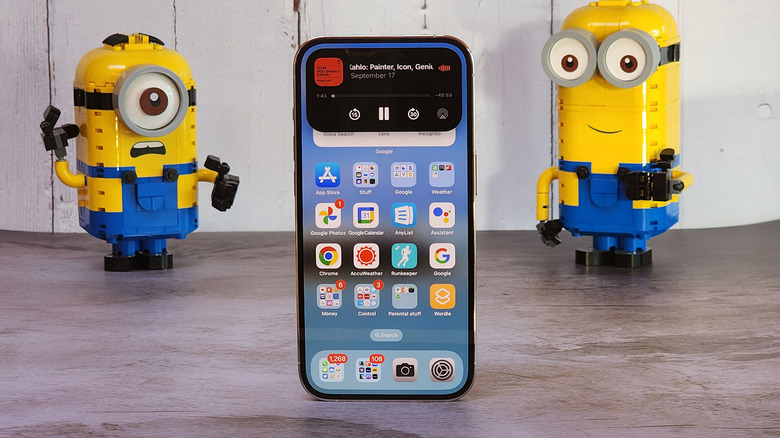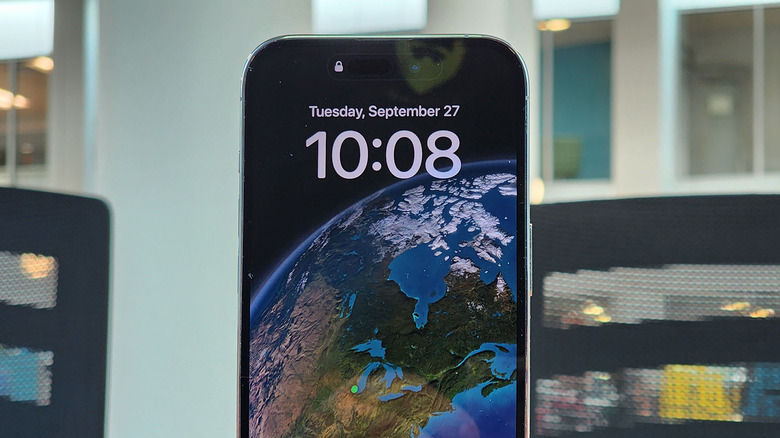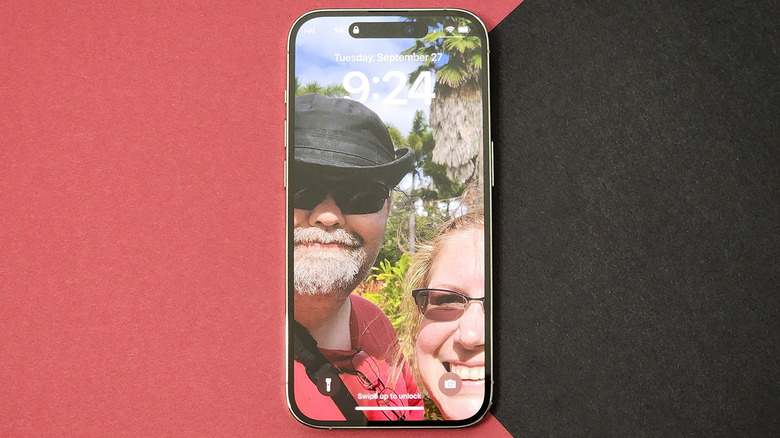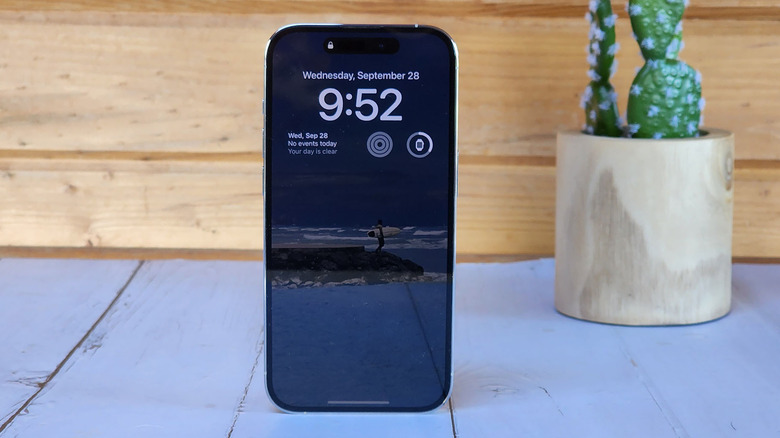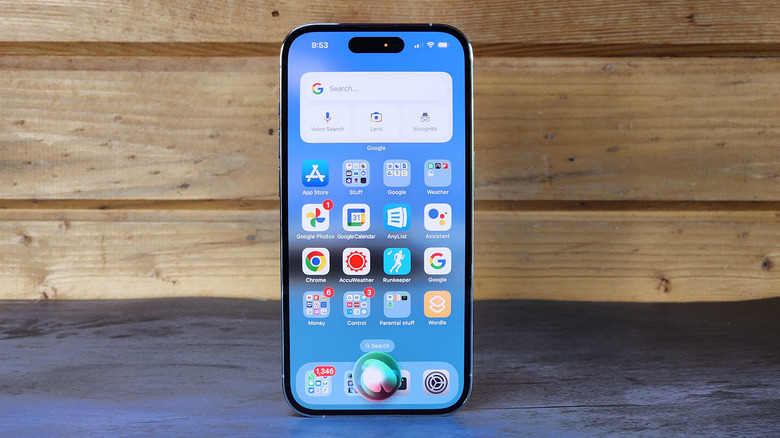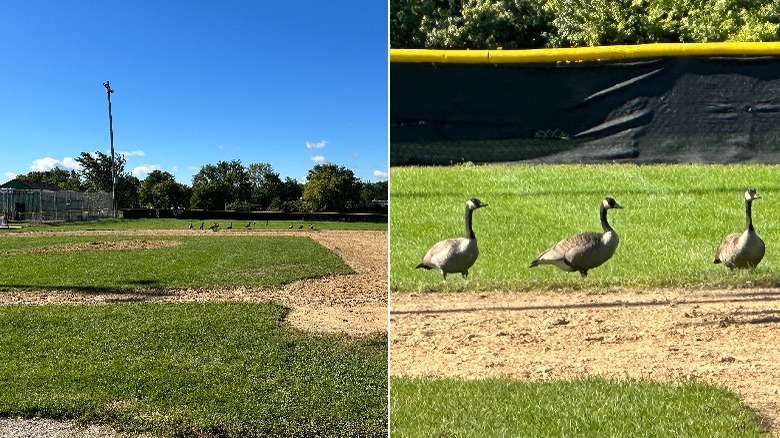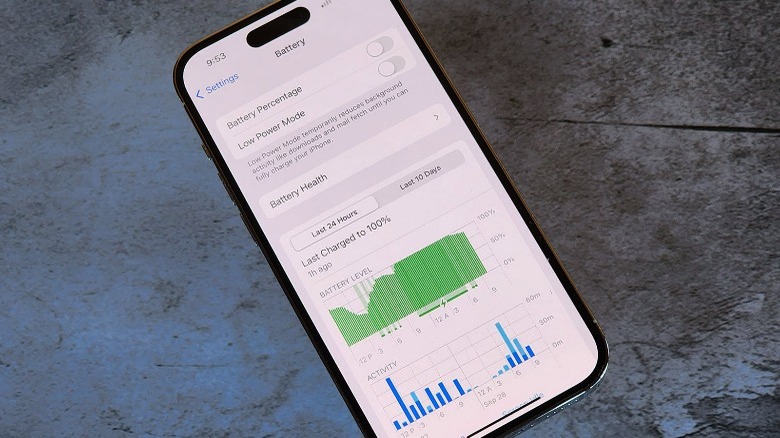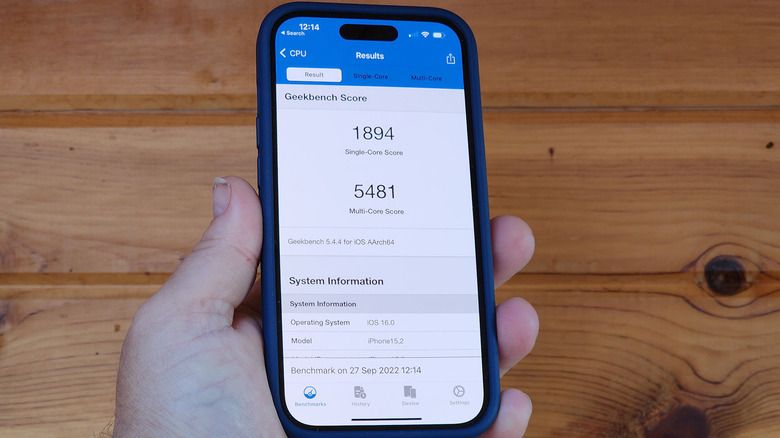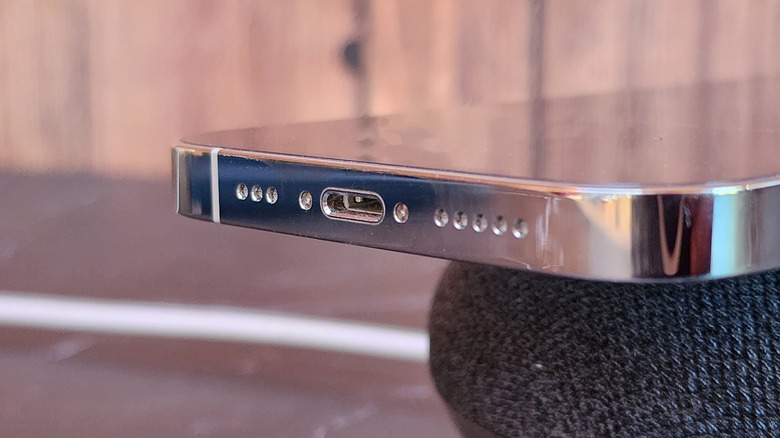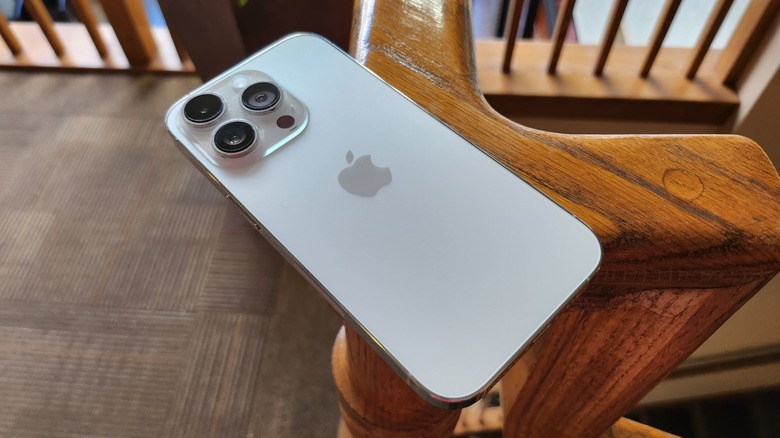iPhone 14 Pro Review: Major Minor Upgrades
- Dynamic Island is fun
- Lock screens are addictive
- Power to spare
- Outstanding cameras
- New safety features I hope to never use
- Battery life slightly worse than predecessor
- Lightning port
- Innovated on the wrong zoom level
Year after year, it gets a little harder to write about the iPhone lineup. The truth is the iPhone — and especially the Pro models — have been great across the board. Of course, in the case of iOS, it helps that there are only one or two options to pick from if you happen to prefer this platform. You get the iPhone 14 Pro, or the iPhone 14, and then you just have to choose between the big iPhone or the small one.
But this year, Apple gave the iPhone — and especially the pro models — a lot of extra spice. Some spice tasted good, and some of it not so much. While the highs of this phone are really high, there are still some infuriating things about the iPhones that are tough to ignore.
But overall, the big question is, is it worth an upgrade? What's interesting about that question is that for the last three years since I've been reviewing the iPhone Pro models, a close friend of mine has been right there upgrading right beside me. That didn't happen this year — they decided to stick with lucky 13. What's odd about that is, this year's iPhone is one of the most interesting in recent years. I've been using an iPhone 14 Pro that I purchased on T-Mobile's network for two weeks and this is my full review.
Flying purple people eater
For the past few years, Apple has had your standard colorways along with a different "hero" color. I have to say I desperately miss the iPhone 12 Pro's Pacific Blue colorway. Last year's Sierra Blue was not nearly as attractive, and this year, I simply could not pull the trigger on Deep Purple. I opted instead for silver, which is more generic for sure, but I typically put cases on my phones anyway, so it wasn't a big sacrifice for me. But this is my one-paragraph plea to Apple to bring back Pacific Blue. Fingers crossed.
As for the specifications, they're all top-of-the-line (for Apple anyway). The 6.1-inch LTPO Super Retina display is pretty great, continuing last year's 120 Hz trend and increasing the max brightness to up to 2,000 nits. Needless to say, there are no issues with outdoor visibility here.
The phone ships with Apple's latest processor, the A16 Bionic, which is a step up over the non-pro version of the phone for the first time. Both phones ship with 6GB of RAM and the Pro model ships with up to 1TB of onboard storage. All this is powered by a 3,200 mAh battery which is just a hair under 4% larger than last year's model.
Phoning the future!
Before we get too deep into the design of the iPhone, there are two parts of the phone that feel really futuristic: eSIM exclusivity (for the U.S.) and satellite connectivity. I'm not going to lie, eSIM exclusivity has the potential to be something of a nightmare for phone reviewers and tech heads in general. As a rule, we rely on our SIM cards to hop from phone to phone as our interests (or our jobs) demand. While I am personally not a fan, I totally get why Apple did it. It's another opening removed from the phone, it's another movable part, and it's one less thing (the SIM key) that Apple needs to ship in the box. For the average consumer, this will not be a big deal and frankly, it's pretty easy to convert to an eSIM. For reviewers, it's potentially migraine-inducing, but that's my problem, not yours.
Speaking of problems, Apple added satellite connectivity to the iPhone which is rather like having a fire extinguisher in your home. You never want to have to use it, but if you need it, you're happy to have it. It's the same thing here. If you're lost and out of cellular range, you can communicate with emergency personnel to get yourself saved. That's a huge deal, and not one to be overlooked.
That pill life
Arguably the biggest design change in the iPhone 14 Pro is the Dynamic Island which takes the notch from last year and puts a hat on it. The Dynamic Island shrinks down the notch slightly, and adds a bit of OLED above it, making the notch more of a pill shape. Stir in some software, and voila, you have a Dynamic Island, which is a great name, and I love it.
The iPhone's Dynamic Island expands where there's an app running in the background that can take advantage of it. The most common use case I had was using turn-by-turn navigation while listening to a podcast. As you maximize one app that can island up (as I call it) the other sits to the side of the island. In the case of Maps-based directions, you see the next turn. In the case of a podcast, you see the cover art. You can tap the island to switch between them. If you tap and hold, you get a mini version of the app.
A lot of this sounds like Android. Having a mini-player as a notification is a perk Android users have enjoyed for years. The ability to switch between music and navigation is an Android Auto feature I love. I also love that both of these features are on iOS now and I'm desperately hoping that this is a move that will start to clean up iOS notifications, but we'll talk more about that later.
Lock, stock, and barrel
Since this device's software is the engine that makes the Dynamic Island work, let's take the opportunity to transition and talk about my second-favorite part about the iPhone 14 Pro — the lock screen. Arguably the lock screen is one of the biggest improvements to iOS 16 and I admit I've been a bit obsessed with it — or them.
Whether you want to highlight a photo of your family, yourself (I won't judge), or your most recent vacation, you can make your lock screen look like anything you want. The lock screen feeds into the device's Always-on display. You can customize your lock screen with any photo from your library, rotating photos that change periodically, or choose one of the many options that Apple sets you up with including but not limited to colors, emojis, and weather. I'm currently sitting with nine lock screens and before you ask, no I don't use all of them regularly. But I can if I want to.
As Apple showed off at WWDC, subjects in the foreground of your lock screen can obscure part of the clock, and the photo in question does not have to be taken with an iPhone. Apple uses AI to determine foreground subjects from any photo. The clock-obscuring this is a bit limited – you can't have any widgets on the screen, and you can only obscure the clock if your subject is in the right place.
More to come
Speaking of widgets and the lock screen, this functionality is limited to the APIs that Apple opens up. In the future, you'll be able to track sports scores and ride shares with the Dynamic Island feature and in widgets, but for now, the widgets in particular are limited to offerings from Apple and a few third-party developers. Those widgets include your calendar, battery widgets for accessories, stock tickers, and some smart home controls. But more will be on the way.
Some third-party developers have already taken Apple up on this including Pocketcasts and Facebook Messenger, both of which can put widgets on your lock screen (and the former which can use the Dynamic Island). Clearly, there is more to come in this regard, and it'll be exciting to see what comes next. Personally, I'm looking very much forward to the sports scores that Apple showed off on stage, but I'm afraid that won't be coming in time for my beloved Cubbies. I guess I'll just have to wait until next year.
Always on
Another thing that is brand new to iPhone this year and exclusive to Pro models is the Always-On display (AOD). Before you get visions of black screens with white writing on them showing you notifications, I need to point out that Apple's Always on Display is nothing like what Android has offered in the past, in a good or bad way, depending on how you look at it.
When you press the power button on the phone, the lock screen dims but remains fixed. The lock screen never turns off; you just get a darker version of it, including all your widgets. In the background, the iPhone ramps down the screen refresh rate to 1 Hz and switches to a dedicated low-power processor to conserve battery life. It's mostly successful. One night for a six-hour sleep session I saw a modest three percent of battery drained. Another night, over eight hours, I saw an eleven percent drop.
Neither of these is particularly bad mind you, but I would like to see Apple work in a happy medium here. Use those fancy Face ID sensors to detect when the phone is in your pocket, so it can turn the screen all the way off. Add an option to make the AOD more like its Android predecessors with just white text and notification icons. I don't think we've seen the last of AOD innovations here, despite Apple not saying as much specifically.
Hey Siri
One pleasant surprise that I've encountered is that Siri seems to have quietly gotten better over the years. I typically use Apple's assistant infrequently, preferring to tap on the Google Assistant app instead, but this time around Siri has gotten a lot more right than it usually does. From navigation to locating businesses to voice dictation, Siri is making some gains. It's still the third best assistant behind Google Assistant and Alexa, but the gap is closing.
Dictation in particular has taken a step forward. I often dictate messages rather than type them because it feels a little more futuristic. Apple added auto-punctuation this year, which is pretty huge. It doesn't always work, but I have rattled off a text or two and noticed that Siri had added a period for me, which is nice.
Aside from the gripes that I laid out in my iPhone 14 Pro editorial the other day (no number row, etc.), iOS is a solid and robust operating system that is a pleasure to use. You get a much more cohesive sense of flow when using iOS that Android can rarely compete with.
Zooming in and zooming out
I already covered a lot of Apple's camera tech when I pitted the iPhone 14 Pro versus the Samsung Galaxy S22 Ultra in a shootout at a local theme park, so I won't go into a ton of detail here again. Apple (finally) brought out a new 48-megapixel camera for the iPhone and the phone is better for it. Images from the main sensor are crisp and sharp and tend to lean a bit on the darker side. They also tend to reflect a more accurate representation of the conditions, rather than a highly-processed photo that "pops" that you might get from other manufacturers.
I want to cover a few points that I didn't get to cover in my other article, one of which is zoom. You'll recall Apple added a 2x digital crop to this camera setup, but Apple has long offered 15x digital zoom which is still fairly respectable. The images you'll get from it shouldn't be blown up and printed poster-sized, but as long as the lighting is good, they'll share on social media just fine. The images above show geese on a baseball field at 1x and 15x.
Macrophotography is also pretty sharp on the iPhone 14 Pro. When you get close up to an object, an icon appears on your screen and the picture "jumps" to macro mode. You'll want to make sure your lighting is good and that you're starting off with the main camera. You'll get really sharp details and some great bokeh in the background.
Good night
At night, the iPhone 14 Pro performs rather well. The notable exception to that is the selfie camera which is grainy in both stills and video. Stabilization is not there either, but that's no surprise because no phone's camera stabilizes well at night. Panning shots are really smooth and the grain that you typically see in night videography is not there. If you look closely at the 3x optical shots, you can see some graininess and highlights can get pretty washed out at night, but this is one of the better cameras to have on you at night, hands down.
The only negative I can find in low light performance is that the ultrawide camera is noticeably darker than the main and optical zoom lens. This is especially true in videography and probably due to the smaller aperture and sensor size.
All-day battery
Battery life on the iPhone 14 Pro takes a bit of a hit from last year's iPhone 13 Pro. It is certainly not a significant hit, but it's notable. The iPhone 13 Pro easily went one and a half to two days off the charger while the iPhone 14 Pro will make it a day and a little if you forget to plug it in. On most nights, I hit the sack with around 25% left in the tank which is perfectly fine in a phone's battery life. Especially once you factor in MagSafe which offers you any number of different stands on your desk so you can charge the phone while you're at work.
This year, Apple's camera module is slightly larger and thicker than last year. That means cases for the iPhone 14 Pro have a larger opening for the camera and a taller ridge to keep the camera protected. Unfortunately, that means many of the third-party MagSafe chargers that I have around my house simply do not work unless I remove the case. This is not Apple's fault, nor is it a ding against the phone, but it has been a point of personal frustration and this is my review so I get to point it out.
Overall, I have a few concerns over battery life. Anecdotally the phone doesn't last as long as the last one did, but the last one was pretty amazing, so in this case "great" is an acceptable step-down.
A-plus power!
This year, Apple reserved the A16 bionic chip for its pro models, keeping the A15 for the non-pro models. The A16 is a blisteringly fast chip and the iPhone is able to power through any task you give it to perform. The phone heats up when playing games like "Genshin Impact" during longer playing sessions, but the phone actually cooled down when I switched to a lower intensity game like "Call of Duty: Mobile".
On the Geekbench side, this phone scores 1894/5481 single and multicore scores. That's a 50% higher score than I got on the Samsung Galaxy Flip 4 running Qualcomm's latest processor. It's a significantly large amount of power — honestly probably more power than anyone needs, short of gamers. That's why it's perfectly fine that Apple went with the A15 Bionic processor in the regular models of this generation of iPhone. There is basically nothing that this chip will do that the A15 can't, except possibly last longer from a future-proofing perspective.
Other test notes
It's really a shame that Apple is sticking with the lightning port for charging and data transfer. I'll be continuing my protest — since I bought the iPhone 13 Pro last year, I have never plugged a lightning cable into the phone except for drone flights, and that's only because I had to. I have not charged an iPhone nor transferred data from an iPhone using that port. I figure Apple probably has some analytics about how the lightning port is used, so I'm voting with my "wallet" in this case. MagSafe or bust.
The speakers on this phone are some of the best I've heard on a phone. That's not saying a whole lot; speakers on phones will probably never be great, but these do sound really good on the low end and makes gaming delightful. Of course, the speakers are easily accidentally covered when holding the phone in landscape.
Apple also brought crash detection to the iPhone this year, which is another one of those "I hope you don't need it" things. Google Pixels have had crash detection for a while now and it's the type of feature every phone should be able to do. I'm glad iPhones can do it now, too.
Wrapping it up
It's not rhetoric to say that this is the best iPhone you can buy this year — unless of course, you're picking up the iPhone 14 Pro Max. But more importantly, there are a lot of changes coming to the phone this year including the Dynamic Island, Lock Screen, AOD, a new camera system, and satellite connectivity. That's a lot of "new" to this iPhone, for sure, and Apple's history of excellence comes along with it. But that takes me back to my friend who has bought every new iPhone as far back as I can remember, and this is the year that he skips.
On the one hand, I get it. The iPhone 13 Pro is a great iPhone and still has all the power and camera chops you could want from a smartphone. Add to that, there are a lot of firsts in this new phone. It has a lot of new-to-Apple tech on board, and first-gen tech usually comes with a red flag. But when you factor in how much is new and just how different this iPhone is from its predecessors, I can't help but think that those who stick with the iPhone 13 are simply blinking at the wrong time.
The iPhone 14 Pro can be purchased now from Apple for a starting price of $999 in Deep Purple, Gold, Silver, or Space Black.
